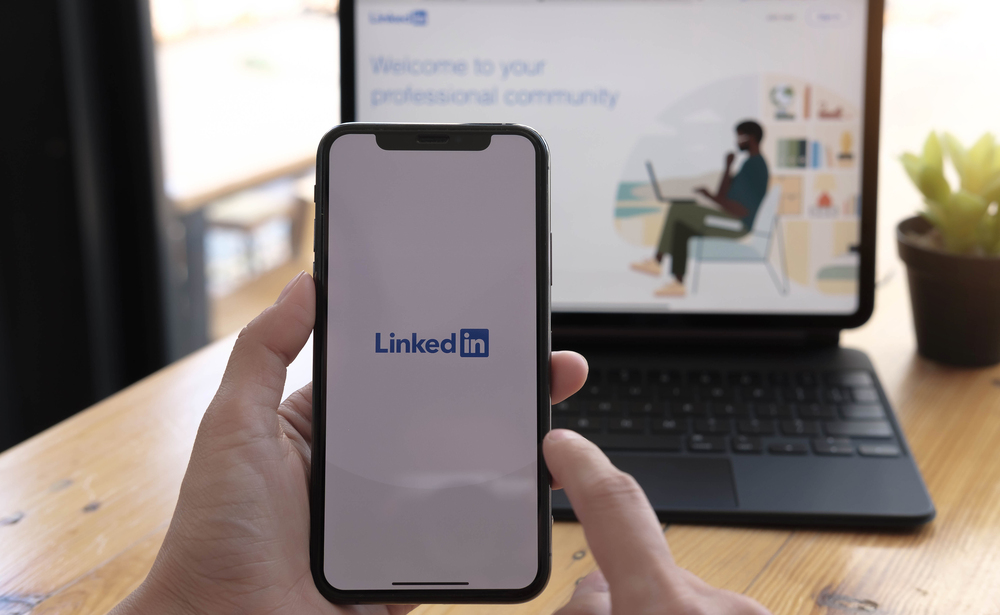To build trust on LinkedIn, you need to start with a compelling profile. LinkedIn has become more than just a professional networking site; it is a powerful platform for positioning yourself as a thought leader and establishing trust with your ideal client.
Building trust and becoming a thought leader on LinkedIn requires more than posting random content. It starts with having a compelling profile that reflects your unique value. You must also set clear, actionable goals guiding your thought leader journey.
Creating a Compelling LinkedIn Profile That Builds Trust
Your LinkedIn profile is often the first impression people will have of you because it is one of the top results when you Google your name. A strong, optimized profile establishes credibility, builds trust, and invites others to engage with you. So, where do you start?
Start With A Strong Headline
Your headline is the most essential part of your LinkedIn profile because it is the first thing people see when they come across your page. It’s also one of the key elements that show up in search results. You must use the 220 available characters wisely.
Your headline should clearly communicate what you do, who you serve, and how you serve them. Don’t just list your job title; highlight what makes you unique. This will help you attract your ideal client while setting yourself apart.
Your headline follows you around LinkedIn.Part of your headline appears when you post or comment on someone else’s post. It is important to communicate what you do at the beginning of your profile.
For example:
- Instead of: Marketing Manager at ABC Digital Marketing
- Try: Growing the Online Presence of Six-Figure Business Owners with Magnetic Marketing. | Digital Marketing Strategist Specializing in Content and SEO | Fractional CMO | Sales Funnels | Launches | LinkedIn and Facebook Ads
The second option highlights your value, making your target audience more likely to see you as someone who can solve their problem.
Craft a Personal and Engaging About Section
The About Section is where you tell your story. The key to building trust is authenticity. People want to know who you are, not just what you do.
Don’t make this section read like a resume. Focus on the challenges you solve and how your expertise benefits others. Tell your story about what makes you passionate about what you do. Speak directly about your client’s pain points and how you have helped people or businesses overcome those challenges.
Follow this framework:
- Attention-getting hook.
- Who you help
- How you help
- Results of working with you
- Who you are.
- Why you do what you do
- Call to Action
Showcase Experience and Accomplishments
In your Experience section, demonstrate your impact instead of just listing your job title and responsibilities. When writing about previous roles, illustrate your impact, how they are relevant to the audience you want to attract, and the expertise you want to be known for.
Use measurable results to provide concrete evidence of your skills and achievements.
For example:
- Instead of: Increased organic website traffic by 30% in six months through a strategic SEO campaign.
- Try: Led a team of five marketers to successfully launch a multi-channel marketing campaign generating $500,000 in revenue.
Leverage the Featured Section
The Featured section of your LinkedIn profile allows you to showcase your best work. This is where you can highlight your thought leadership content, whether articles, case studies, presentations, podcast appearances, or videos. The content you feature should align with how you want to be known.
The Featured section is another opportunity to reinforce your credibility and provide social proof, essential for building LinkedIn trust.
Optimize Your Skill and Endorsements
The Skills section might seem like a minor part of your profile, but it is important for boosting your credibility. The key here is to focus on the skills that align with your thought leadership goals. Don’t overload this section with irrelevant skills from past jobs. Be strategic.
Endorsements of these skills will bolster your profile’s trustworthiness.
This assessment, Elevate Your LinkedIn Profile: An Assessment for Entrepreneurs, Coaches, and Creatives, will help you elevate your LinkedIn profile.










